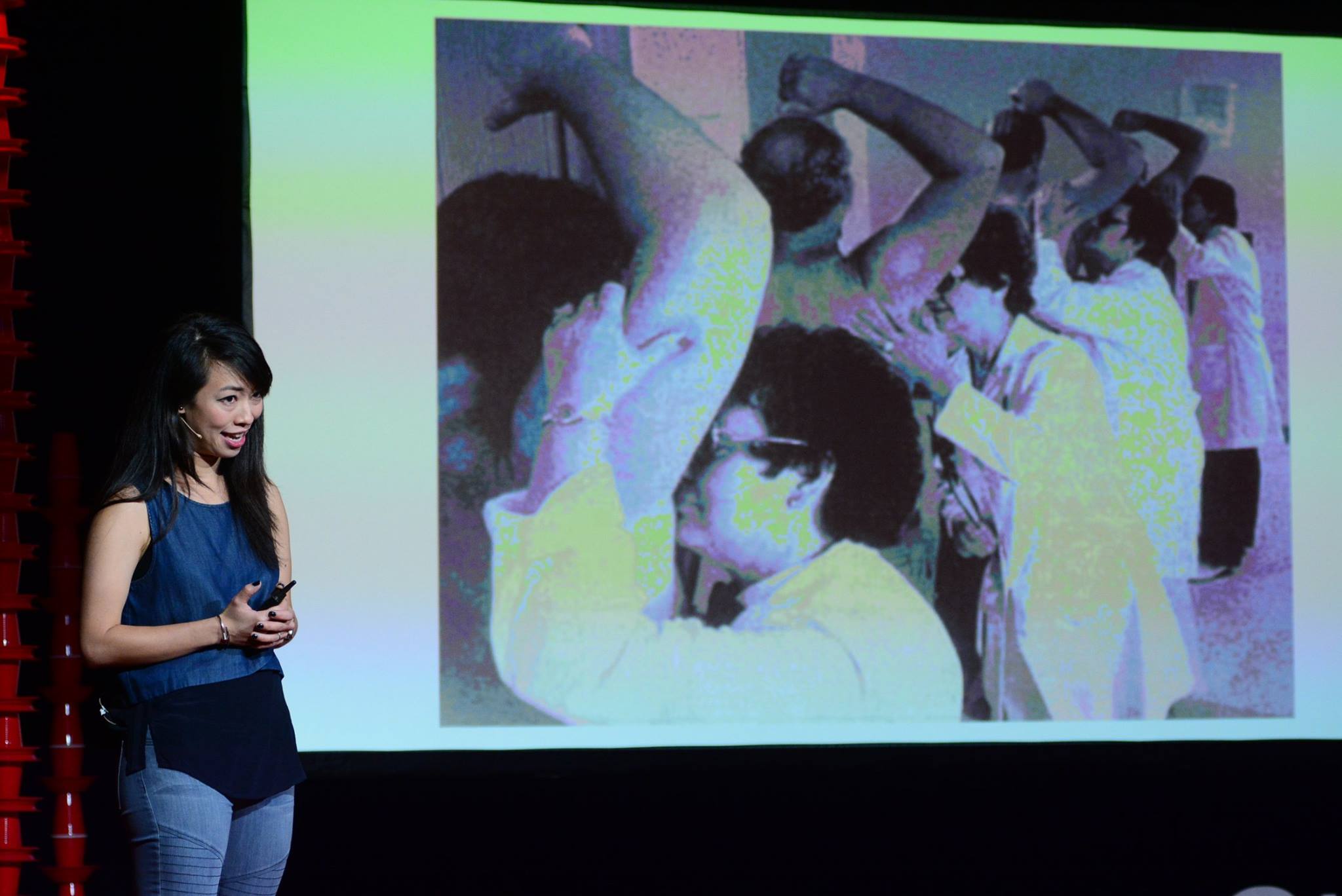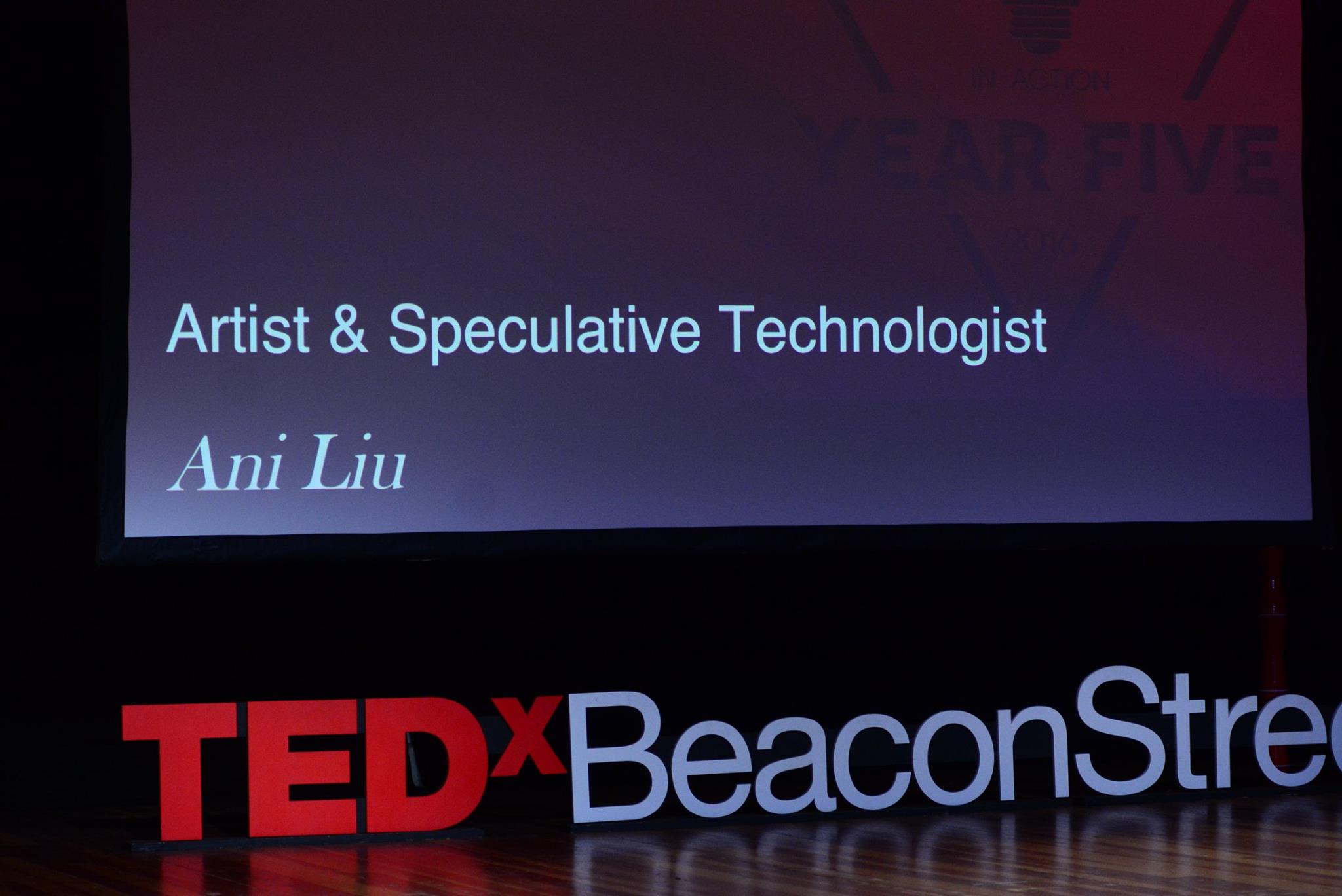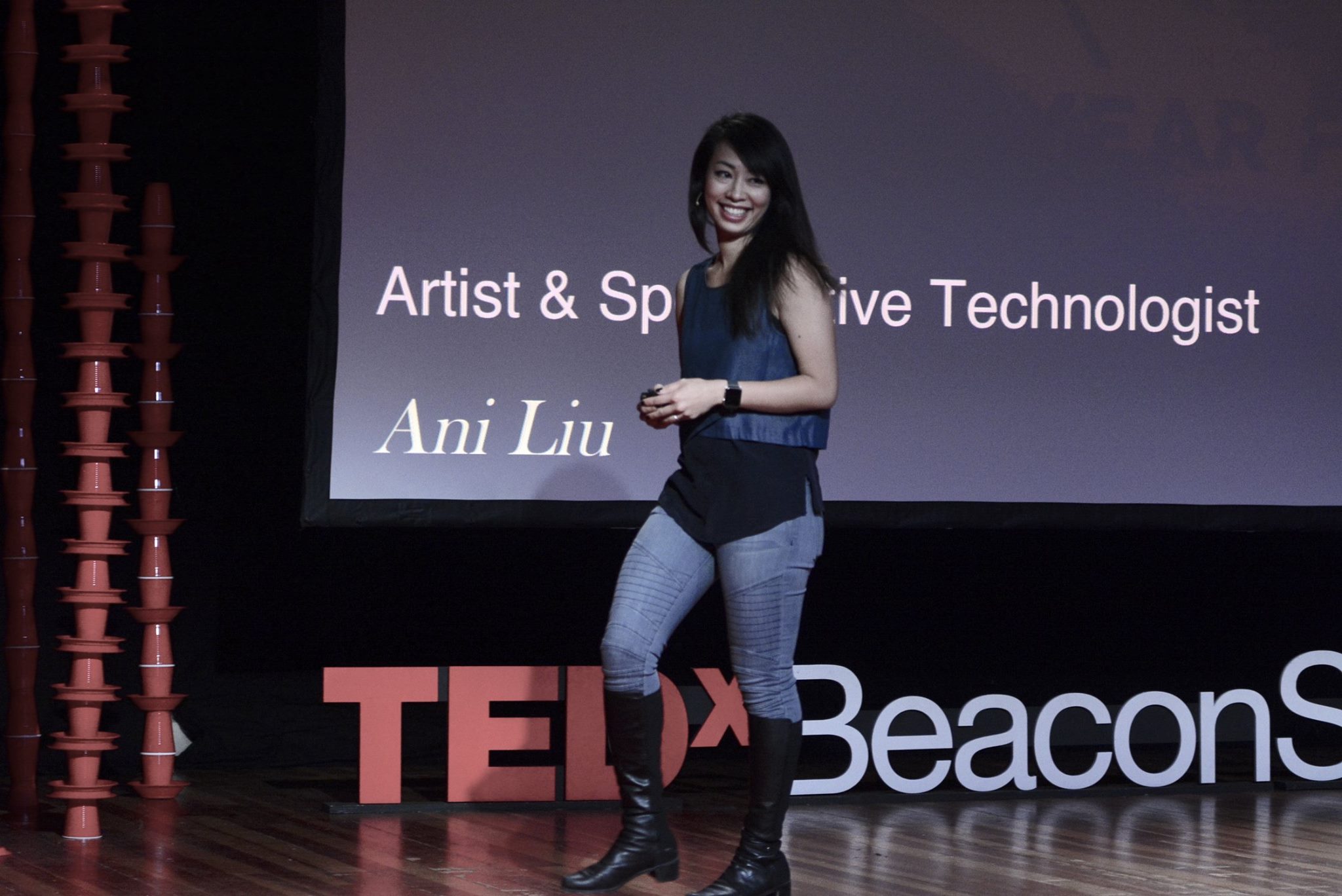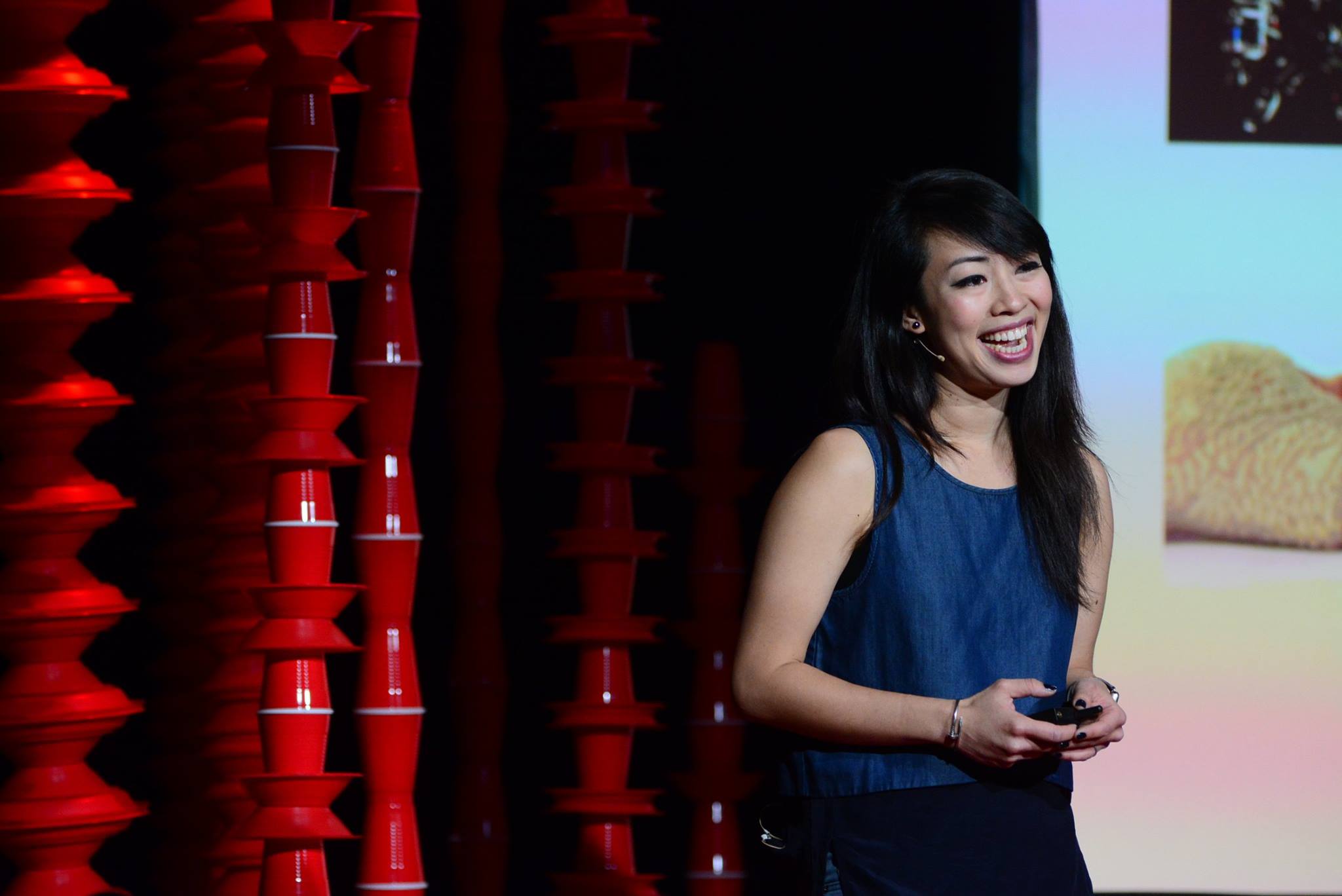I spent a month in factories in China on a research grant called Hacking Manufacturing from MIT Media Lab. You can read about my experience here: https://www.media.mit.edu/posts/hacking-manufacturing-research-on-the-factory-floor/
Profiled by MIT Media Lab
Project Featured on FoxNews
Article on PC Magazine now Live
"In a world full of new science and technology, it's increasingly difficult for society to contemplate what it's doing to itself before it's already doing it. This trend will only accelerate, though, so today's artists should consider it their duty to utilize STEM in their work."
On ArtFCity: "Ani Liu Flips the Script"
Keynote Speaker at Campus Party Brasilia
.
I will be giving a talk about my work as a keynote speaker in Brasilia, Brazil June 16th! Come visit and say hi if you are in the area!
Update: Images from the Talk!
I must admit this is the biggest selfie line that has ever assembled for me after a talk. Thank you for all the warmth and energy Brasilia!
Interview at PC Magazine
.
I had the pleasure of sharing my work at PC Magazine today! You can watch the entireinterview here.
Featured on Adafruit Blog
1st Place for Schnitzer Art Prize in the Visual Arts
.
"The Schnitzer Prize was established in 1996 through an endowment from Harold and Arlene Schnitzer of Portland, Oregon. Harold Schnitzer, a real estate investor, graduated from MIT in 1944 with a degree in metallurgy. The prizes—a first prize of $5000, second prize of $3000, third prize of $2000 and honorable mentions of $1000—are awarded to undergraduate and graduate students for excellence in a body of artistic work. This year’s recipients represent the diverse academic backgrounds of contemporary artists, as well as the distinctive creative culture of MIT, where science, technology and art inform each other.
An exhibition of selected works by the Schnitzer Prize winners—Ani Liu, Angel Chen, Jessica Rinland, Anne Graziano and Edwina Portocarrero—will be on view in the Wiesner Student Art Gallery, opening June 2, 2017.
Ani Liu
Ani Liu, the first-prize winner, is an interdisciplinary artist and graduate student in the Media Lab in the Design Fiction group. In her research-based art, she explores the cultural implications of emerging technologies. Her work includes architectural installations, wearable prosthetics, augmented reality and synthetic biology.
Her evocative biological design objects include: “Kisses from the Future,” a petri dish of micro-organisms cultured from a kiss; “Forget Me Not,” a plant that is engineered to emit a person’s odor, reversing the perfumer’s art of applying floral fragrances to people; and “The Botany of Desire: Experiments in Interspecies Interfaces,” which tests the limits of interspecies empathy. Ani’s expansive portfolio also includes digital and analog works that investigate everything from networked reality to falling in love.
For her thesis work, she controls the movement of sperm with her mind. She describes the work as a “biopolitical feminist art piece” and says it allows her both “to push the limits of what I was able to accomplish technologically, in terms of the engineering” and “to question who gets control over bodily rights, and what kind of metaphorical acts can empower and make us question the status quo.”
My Work is featured in VICE/ BROADLY
My work is featured on WIRED Germany
There is also an extensive interview included! https://www.wired.de/collection/design/ani-liu-mit-interview-smelfie-biotechnologie-parfum-duft-geruch-blume
Mind-Controlled Spermatozoa Project is getting international press
Speaking at ArtTechPsyche, presented by Harvard Digital Arts and Humanities
Please to announce that I will be speaking at ArtTechPsyche at Harvard this April 20th.
ArtTechPsyche celebrates human expression at the intersection of technology and the arts. Harvard Digital Arts and Humanities (DARTH), in collaboration with the Harvard Library and the Digital Futures Consortium, invites you to participate in a day of immersive digital experiences, art exhibitions, technology demos, and visionary speakers on Thursday, April 20, 2017 at Arts @ 29 Garden.
Explore the creative process and its impact on emerging technologies. Discover the ways in which technology shapes us, and conversely, how the artist continually challenges and informs technological development. Interact with cutting edge art installations and software demos to experience the world in new ways. Meet like-minded faculty, staff, students, researchers, and colleagues of any skill level while exploring new projects and collaborations on and around campus.
Speaking on BioArt at Columbia University
Excited to be speaking about BioArt to Synthetic Biology students of Professor Tal Danino!
Interview in Spanish Press
My talk "Synthetic Biology for the Senses" is live on TED.com
https://www.ted.com/talks/ani_liu_smelfies_and_other_experiments_in_synthetic_biology/up-next
The talk was also featured on the front page of Ted.com today!
Speaking at Dent the Future 2017!
I am excited to say that I will be speaking at Dent the Future, where I will be sharing new work! Drop me a line if you will be there as well!
I am pleased to announce that I will be participating in a group show titled Body Politic.
.
OPEN is pleased to premiere Body Politic, a group show featuring works by eleven artists from five countries including Ani Liu, Ayodamola Okunseinde, Azra Aksamija, Emmeline Franklin, Brittany Cohen, Lauren McCarthy, Manisha Mohan, Pedro Oliveira, Sophia Brueckner, Wiena Lin, and Xuedi Chen. Body Politic is guest curated by Laura Zittrain.
The artists in Body Politic deploy wearable objects to resist social power structures. Sculptures, dresses, devices, and a spacesuit depict alternate visions of a tech-enabled, inclusive future. These works respond to the experiences of individuals seeking a place in a post-hope America struggling with sexism, racism, and xenophobia.
Consisting of speculative objects designed for the body, this collection makes tangible the artists’ latent anxieties about safety and inclusion. Some works are intended as a cautionary tale, designed to provoke debate; the hat by McCarthy that pokes the wearer should they stop smiling and the interstellar communication device for people of color by Okunseinde and Lin. Others are working prototypes that contend with a future which has already arrived; the “secure” dress by Cohen and Franklin that only unfastens itself with the wearer’s fingerprint, or the letterman jackets made out of “cultural fabric” by Aksamija, and the portable Faraday cage by Chen and Oliveira.
These objects fall somewhere between the everyday and the uncanny. They're familiar enough to accept at first glance: the lipstick by Liu, the amulet by Brueckner, the bra by Mohan. But something is unsettling: the lipstick attracts plants, the amulet harvests attention, and the bra releases a noxious odor.
If the oppressed co-opted the production style of technology solutionism, these would be the wearables we’d get. Yet contemplated as serious products, they are absurd partial solutions. They show us that without civic discourse about the technology we want and need, gadget-making in isolation only further entrenches the status quo.
In an age of political authoritarianism, runaway tech, and expanding intersectional diversity, the works in Body Politic make clear the need to focus on social justice when creating new technologies.
Guest curator Laura Zittrain works as a stylist and curator at the intersection of fashion and technology. Previously she was the Harvard University Wheatland Curatorial Fellow in the Collection of Historical Scientific Instruments where she researched and developed the permanent exhibit for 1944's Mark-1, the world's first programmable computer. While at Harvard, Zittrain contributed to various exhibits, including a retrospective on the Rorschach ink blots, chatbots and the history of artificial intelligence, and science pedagogy during the Cold War. Zittrain holds a A.M. in the History of Science from Harvard University, B.S. from Georgetown University, and a certificate in personal styling from The School of Style.
Installation at Museum of Fine Arts
Boston Museum of Fine Arts I will be showing a new art installation at the mfaNOW event December 9-10: furniture that turns secrets into haptic vibrations you can feel in your bones. Come check it out if you are in Boston! Project done in collaboration with my lovely friends and fellow MIT Media Labbers Gerson Dublon, Nicole L'huillier, Adam Horowitz, and Xin Li.
TEDX BeaconStreet 2016
This November I presented some of my research at a TEDX event in Boston. Please to share some of the images below. A link to the full talk will be coming up soon!






























